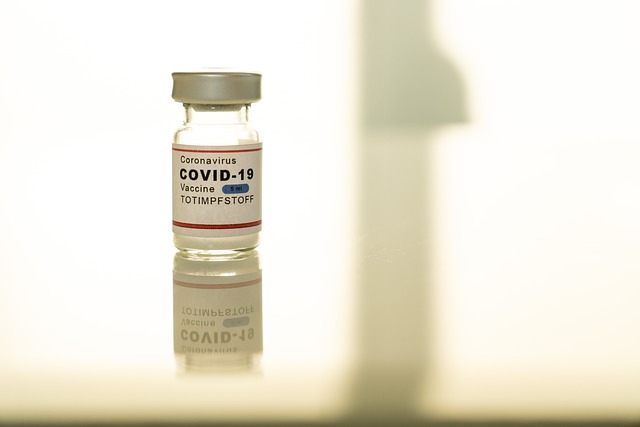PRP injections for joint arthritis are a non-invasive treatment option for athletes and active individuals suffering from tendonitis and ligament injuries, leveraging the body's natural healing mechanisms through platelet-rich plasma (PRP) to reduce inflammation, stimulate tissue repair, and expedite recovery.
“Discover the potential of Platelet-Rich Plasma (PRP) therapy in revolutionizing treatment for tendonitis and ligament injuries. This natural, game-changer approach harnesses your body’s healing power by utilizing your own blood. Understanding these common yet painful conditions, their causes, and symptoms is key. PRP injections for joint arthritis offer a targeted solution, stimulating tissue repair and reducing inflammation.
Read on to explore the science behind PRP, its numerous benefits, and the simple procedure involved, leading to faster recovery and improved mobility.”
Understanding Tendonitis and Ligament Injuries: Causes and Symptoms
Tendonitis and ligament injuries are common conditions affecting athletes, active individuals, and those with repetitive tasks. Tendonitis refers to inflammation or irritation of a tendon, often caused by overuse, injury, or underlying medical conditions. It typically results in pain, swelling, and stiffness near the affected joint, especially during movement. For instance, Achilles tendonitis is a well-known condition affecting runners and athletes involved in high-impact activities.
Ligament injuries, on the other hand, involve sprains or tears in the connective tissues that hold bones together in joints. These injuries often occur due to sudden twists, falls, or direct impacts. Symptoms include joint instability, pain, bruising, and limited range of motion. Ankle sprains and knee ligament tears are frequent examples seen in various sports and everyday life. Proper diagnosis is crucial, and seeking medical advice is essential for effective management, which may include rest, physical therapy, or advanced treatments like PRP injections for joint arthritis.
What is Platelet-Rich Plasma (PRP) Therapy?
Platelet-Rich Plasma (PRP) therapy is a cutting-edge, minimally invasive treatment that utilizes the body’s own healing mechanisms to repair and regenerate damaged tendons and ligaments. PRP injections for joint arthritis involve extracting a small sample of a patient’s blood and spinning it in a centrifuge to isolate platelets—small blood cells known for their role in clotting and healing. This concentrated solution of platelets is then injected into the affected area, such as a tendon or ligament, where it releases growth factors that stimulate tissue repair and regeneration.
The therapy aims to reduce inflammation, promote tissue healing, and alleviate pain associated with tendonitis and ligament injuries. By enhancing the body’s natural healing process, PRP injections offer a potential alternative to surgical interventions for these conditions. This non-invasive approach has gained popularity among athletes and individuals seeking effective relief from joint arthritis without the risks associated with surgery.
The Science Behind PRP Injections for Joint Arthritis
PRP injections for joint arthritis have gained significant attention in the medical community as a promising treatment option. Platelet-rich plasma (PRP) is a natural substance derived from the patient’s own blood. It contains a high concentration of growth factors and cells that promote healing. When injected into affected joints, PRP helps reduce inflammation, stimulates tissue repair, and accelerates the body’s natural recovery process for tendonitis and ligament injuries.
The science behind PRP injections is based on harnessing the body’s inherent ability to heal itself. By delivering a concentrated dose of platelets directly to the site of injury, PRP provides a surge of bioactive molecules that initiate and enhance the healing response. This advanced therapy has shown promising results in numerous clinical studies, demonstrating its effectiveness in alleviating joint pain, improving mobility, and potentially reducing the need for more invasive treatments or surgeries.
Benefits, Procedure, and Recovery of PRP Treatments for Tendons and Ligaments
PRP (Platelet-Rich Plasma) treatments offer a promising approach for managing tendonitis and ligament injuries, potentially revolutionizing care in the world of joint arthritis. The procedure involves injecting a patient’s own blood, enriched with a high concentration of platelets, directly into the affected area. These platelets are known to release growth factors that stimulate tissue repair and regeneration.
Benefits include accelerated healing, reduced inflammation, and pain relief, making PRP injections an attractive alternative to surgical interventions. The recovery process is generally swift, with many patients experiencing improved mobility and strength within a few weeks. This non-invasive method allows for faster rehabilitation, enabling athletes and active individuals to return to their routines sooner while fostering a more natural healing environment for tendons and ligaments.
PRP (Platelet-Rich Plasma) therapy emerges as a promising treatment for tendonitis and ligament injuries, offering a natural approach to managing pain and promoting healing. By harnessing the body’s own regenerative cells, PRP injections for joint arthritis have proven effective in speeding up recovery and reducing inflammation. This non-invasive procedure is an attractive option for athletes and active individuals seeking relief from chronic or acute injuries without the risks associated with surgery. With ongoing research, PRP continues to revolutionize sports medicine, making it a valuable tool in navigating the challenges of tendonitis and ligament damage.
